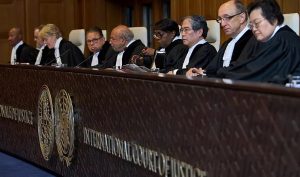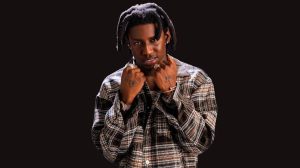Kenya’s Ruto embraces rivals to shore up support
4 min readKenyan President William Ruto has sought to solidify his grip on power by integrating opposition figures into his cabinet. This move, viewed as a strategy to address mounting criticism of his administration, comes as Ruto faces increasing political challenges and public dissatisfaction.
Ruto’s decision to engage with opposition figures is not new. Earlier this year, he extended an olive branch to former President Uhuru Kenyatta, his political rival, after Kenyatta had backed opposition leader Raila Odinga in the 2022 election. Ruto emphasized that his outreach to former adversaries was aimed at fostering national unity and promoting greater synergy within his government. However, analysts suggest that his efforts are partly a response to the growing unpopularity of his government, particularly in central Kenya, the political heartland of the Kikuyu people.
The Rift between Ruto and his deputy, Rigathi Gachagua, has intensified following the latter’s impeachment in October, exacerbating tensions within the government. Many believe the impeachment was politically motivated, as it coincided with the rising discontent in the central region. Furthermore, the government’s unpopular economic policies, including increased taxes on salaries, fuel, and the introduction of new levies for housing and healthcare, contributed to public dissatisfaction. Protests against the government peaked in June, leading to the withdrawal of a controversial finance bill that aimed to raise taxes further.
In response to the political turmoil, Ruto took decisive action in July, firing nearly his entire cabinet to quell the protests. His new cabinet included four key figures from Odinga’s opposition party, including ministers for finance and energy, signaling his intent to create a broad-based government. Despite this, Ruto’s leadership faced further scrutiny following the impeachment of Gachagua, and tensions between the two men, once allies, spilled into public view.
Aware of the political risks heading into the 2027 elections, Ruto sought to repair his relations with central Kenya by meeting with Kenyatta at his home in Ichaweri, in Kiambu County, in early November. The visit marked a shift in Kenya’s political dynamics, as Kenyatta had largely remained out of active politics since stepping down in 2022. Within days of the meeting, Ruto appointed three of Kenyatta’s allies to key positions in his cabinet, signaling his desire to placate the region and heal political divisions.
On November 16, Ruto nominated Mutahi Kagwe, who had served as the health minister under Kenyatta, to head the agriculture ministry. Former governors Lee Kinyanjui and William Kabogo, both strong allies of Kenyatta, were also appointed to the trade and communications ministries. Their appointments were seen as a gesture to strengthen Ruto’s standing in the Mt Kenya region, which had grown increasingly hostile towards him following Gachagua’s impeachment.
Political analyst Herman Manyora noted that the appointments were likely an attempt by Ruto to mitigate the damage caused by the impeachment and address the growing dissatisfaction in central Kenya. Ruto’s move also involved promoting his trusted ally, Kipchumba Murkomen, to the role of interior minister in a minor reshuffle.
These political shifts have sparked mixed reactions. Ruto’s decision to include members of Odinga’s party in his cabinet has led to criticism from some sectors, particularly from younger Kenyans who feel betrayed by Odinga’s participation in the unity government. The hashtag #RutoMustGo has gained traction among the youth, who feel that the deal between Kenya’s political elites will only benefit the leaders, not the people.
Church leaders, who had strongly supported Ruto in the 2022 election, have also voiced concerns about his leadership style, further fueling public discontent. A recent survey by the Mzalendo Trust revealed that the high cost of living and widespread unemployment were key factors driving dissatisfaction with Ruto’s administration.
Ruto has attempted to deflect criticism by blaming the media for spreading “fake news” and labeling his opponents as “filled with evil spirits.” However, political experts like Manyora warn that the consolidation of power among Kenya’s political dynasties could exacerbate tensions and fuel further protests against Ruto’s government. “It’s an attempt to assemble political dynasties to protect each other, which could backfire and make things worse for Ruto,” said Manyora.
Ruto’s presidency was built on promises to uplift Kenya’s poor, particularly the youth, whom he referred to as “hustlers.” He positioned himself as an outsider to the entrenched political dynasties of the Kenyattas and Odingas. However, some of the very Kenyans who supported him in his bid for change are now disillusioned, as they see little progress in improving their lives. Despite Ruto’s political maneuvers, it remains unclear whether his efforts to unite the country will ultimately quell dissent or deepen the divisions within Kenya’s political landscape.







